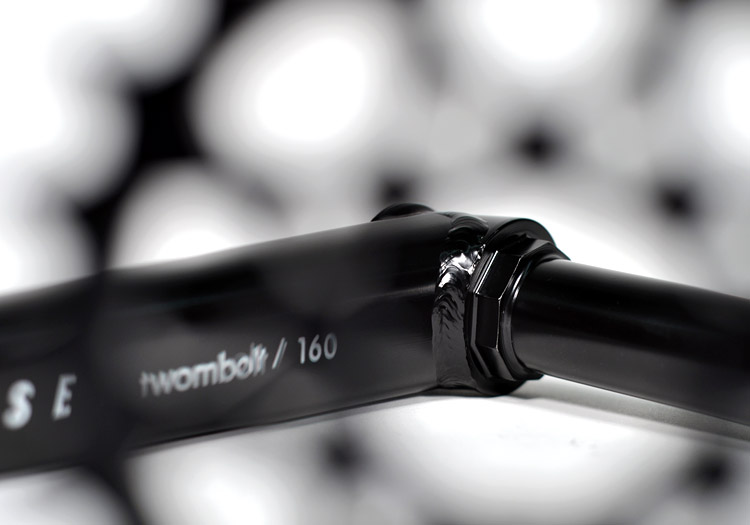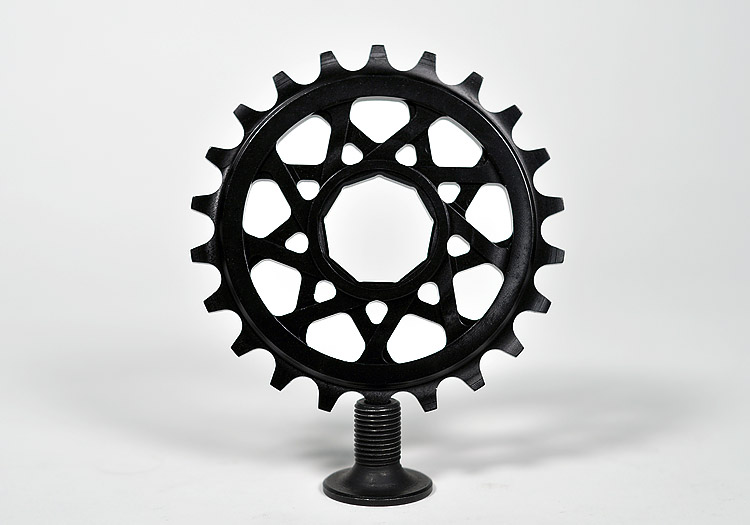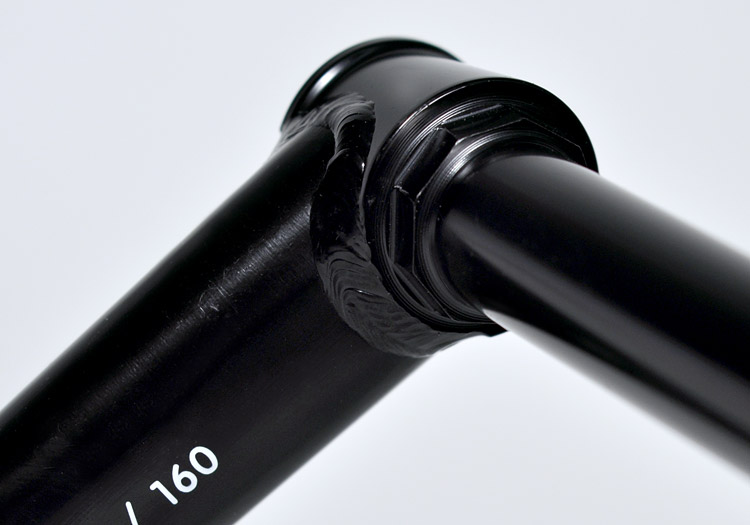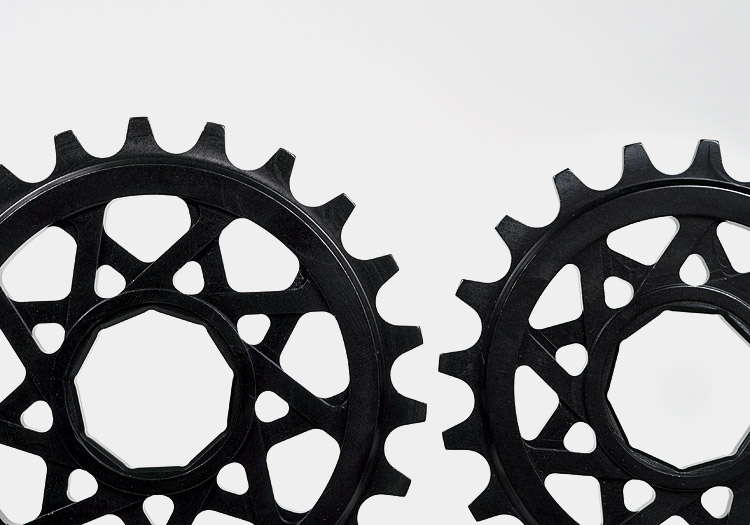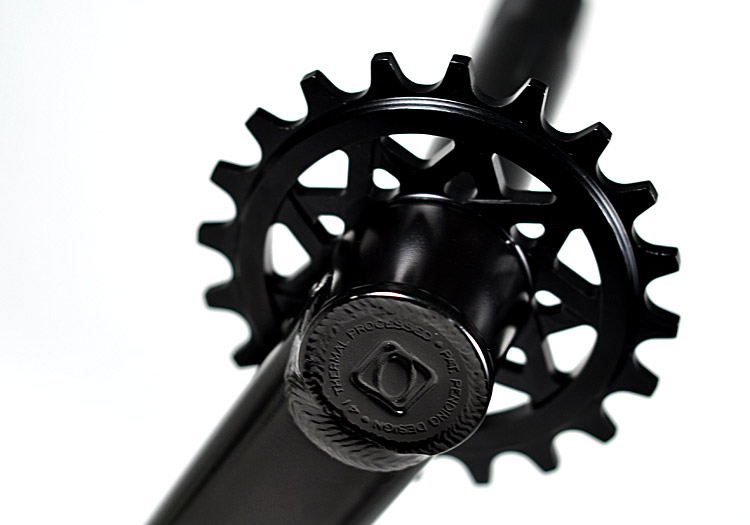Flatware “Socket Drive”
Here’s the latest product to come out of Flatware line. This new flatland-specific Twombolt crank and Rhode Island sprocket are available now, so hit up your shops and mail-orders to get a set. Click around the flipbook above for pics and read below for details.
New “Socket Drive” Interface
This 9-sided sprocket interface has been designed as a new standard for sprocket fitting. It can be built into the spindle on 2-piece cranks like the Twombolt, or it can be incorporated into the arm on 3-piece cranks.
A new interface seemed to be a necessary development because sprockets have become smaller across the board. On anything less than a 25-T there starts to be a heavy concentration of stress around the drive bolt and the sprocket teeth. Switching to a closer spaced sprocket bolt is one solution, but that also increases the stress on the sprocket as the same torque applied at a closer radius results in a much larger contact force.
This new feature eliminates the need for a drive bolt altogether, which saves weight and simplifies the entire assembly process, as well as removing a potential weak spot in the crank arm.
The Socket Drive interface size is big enough to let a 22mm axle pass through in the case of 3-piece crank designs. Nine sides were chosen because an odd number of sides allows the sprocket to self-center, so the sprocket can be a relatively relaxed fit on the interface rather than needing to be a interference fit to ensure concentricity (as it is on the standard Twombolt crank).
Nine was chosen over “seven” sides or “eleven” because ultimately the engineering numbers look good. As the number of sides increases the fit becomes more critical, making manufacturing and assembly harder. As the number of sides decreases, the inefficiency of the interface overall decreases and the weight increases. The nine-sided Socket Drive interface also eliminates the need for the steel insert that might be necessary with a splined interface, which helps keep everything simple and affordable.
Sprockets down to a size of 10 teeth are theoretically possible (though lets hope things never go that far) so this means the interface should be “future proof” too.
If you’re a manufacturer that’s interested in using the ROYALTY FREE interface, please download the spec sheet for dimensions and tolerancing specifications and feel free to use the drawing to produce your own Socket Drive sprockets. Dimensions for making the crank’s sprocket boss will also be posted soon.

